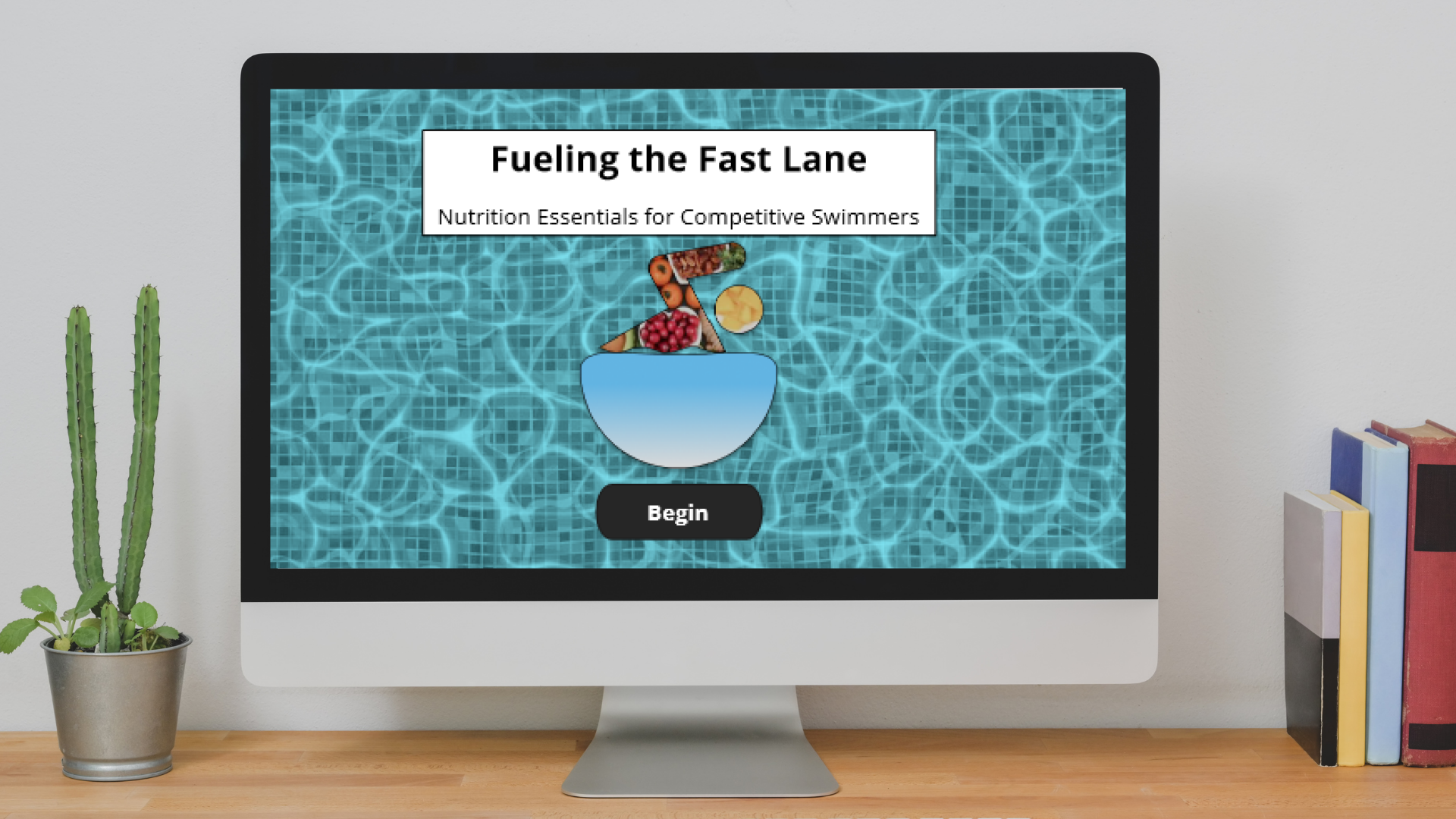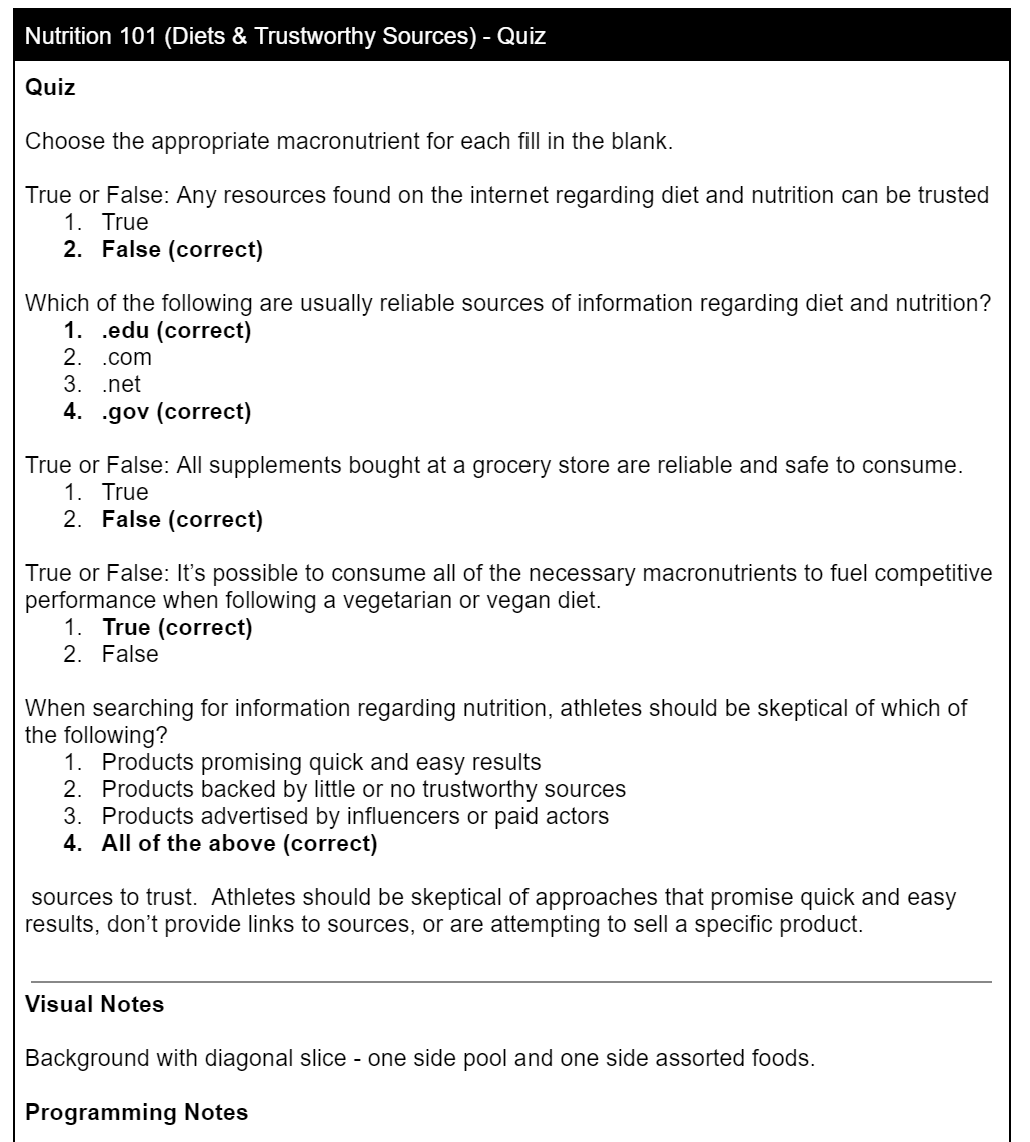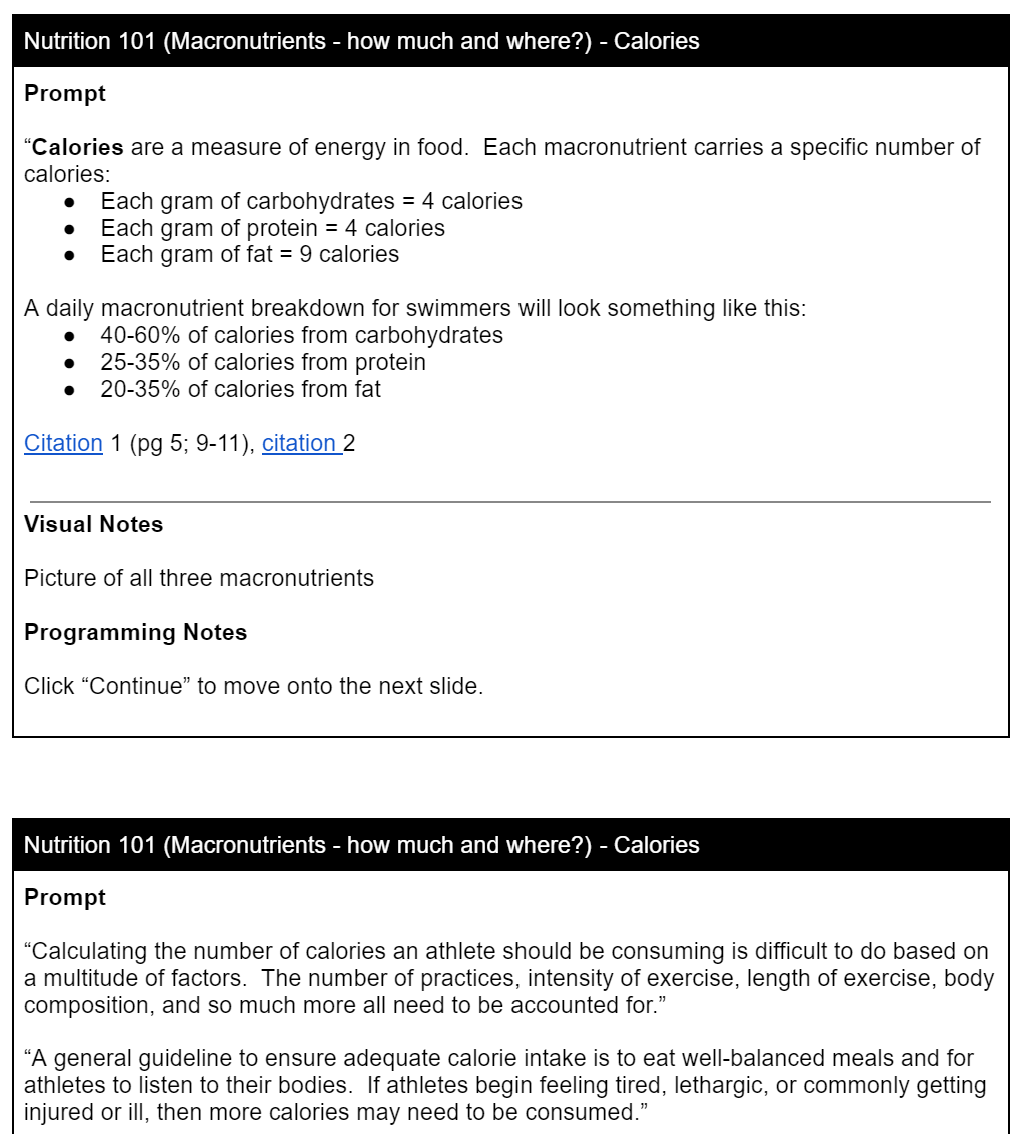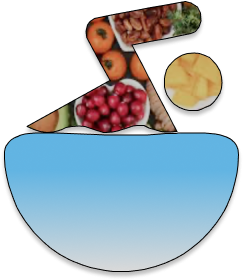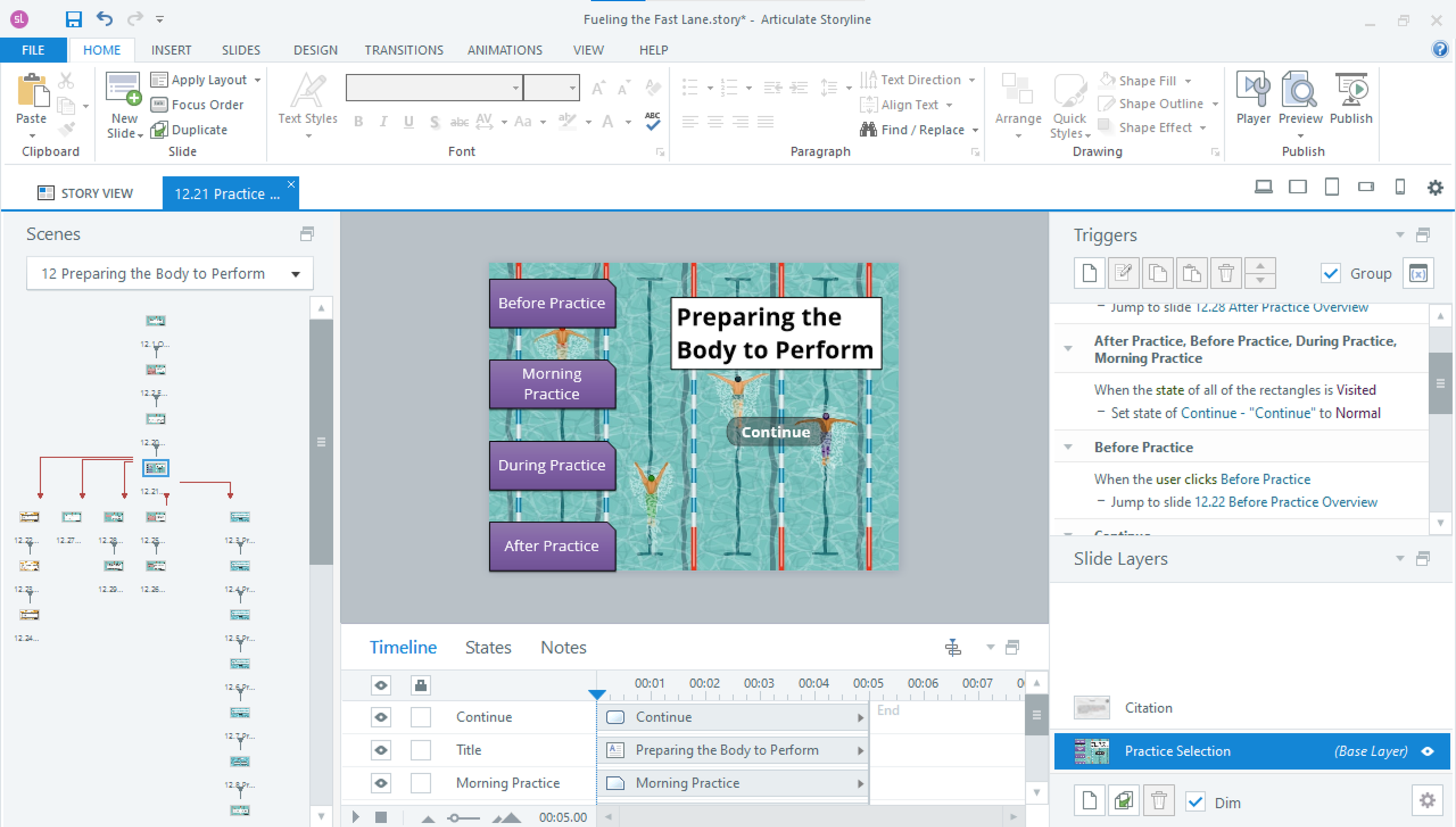Fueling the Fast Lane: Nutrition Essentials for Competitive Swimmers
Complete this eLearning course to deepen your understanding of the importance of nutrition for competitive swimmers. This course dives into how nutrition affects athletic performance, the basics of nutrition, and the best foods to eat leading up to practices and competition.
Audience: Competitive swimmers and parents of competitive swimmers
Responsibilities: Research, Action Mapping, Storyboarding, Visual Design, Assessment
Tools Used: MindMeister, Figma, Freepik, Articulate Storyline 360, Google Docs
The Problem
Food fuels the body’s ability to move. Without proper fueling, a competitive swimmer is unable to train or compete at a high level and recover sufficiently. Intense practices and competitions can last several hours, and nutrition affects the body’s ability to recover sufficiently, especially during weeks of hard training and competitions taking place over the course of several days. Working as a competitive swim coach at a Top 50 nationally-ranked club, our staff saw firsthand that our athletes were not taking their nutrition seriously prior to practices and competitions - gummy bears, hot cheetos, and french fries are just a small sample of the foods some of our athletes have consumed prior to practices and competition. Our athletes were working hard in the pool, but neglected preparing the body to train and compete at a high level.
The Solution
This course was designed to educate users on swimmer nutrition, specifically for competitive performance. The goal for those taking the course is to understand why nutrition is important for athletic importance, the basics of macronutrients, and how to identify healthy foods to fuel performance before, during, and after both practices and competitions. Information for this course took into account theories and practices of both pedagogy and andragogy; users are primarily competitive swimmers under the age of 18, but parents of swimmers have also been encouraged to take the course since they are the primary providers of food and resources for these athletes. To reinforce the knowledge gained from this course, users have an opportunity to review cited sources, participate in interactive activities, and take quizzes.
My Process
After consulting with coworkers about the objectives of the course, I constructed an outline. After completing an outline I began my research, which was centered around scholarly journals, a nutrition textbook from the University of Hawai’i at Manoa, and resources provided by USA Swimming. Once the outline was fleshed out with sufficient resources, I began storyboarding. With a storyboard complete, I then began building out the course.
Learning Objectives
To ensure that users walk away with an increased understanding of nutrition, as well as how to maximize nutrition to optimize athletic performance, I came up with three main objectives:
Identify how nutrition affects swimming performance
Understand the role of macronutrients in the body
Identify optimal foods to fuel performance before, during and after both practices and meets
These objectives helped guide the creation of the project. To satisfy users - both young competitive swimmers and their parents - I incorporated learning strategies and methods supported by both pedagogy and andragogy.
Visual Design
An objective I gave myself for this course was to design a visual that allows users to quickly see what the course is about. A visual design primes users to be prepared for what they’re about to learn - in this case, the purpose of nutrition on swimming performance. To create this design I grabbed a food background and swimmer outline from Freepiks. I then overlaid the swimmer outline onto the food background in Figma, and altered the image to fit into the swimmer outline. Lastly, I created a water aesthetic to place below the swimmer to bring together the swimmer-nutrition connection.
Throughout this course I also kept the aquatic and nutrition themes at the forefront of each section. A recurring feature is the table of contents placed in the format of a pool, where users can select each section within the lane lines of the pool. Additionally, to reinforce the connection between nutrition and swimming all quizzes have a pool background.
Full Development
Once the course was complete, I sent it to several users to test and gain feedback from. Overall the project was well-received, with a few notes on ways to improve:
Integrate more visuals for youth learners. Youth learners are less motivated to read and study a densely worded course, but visuals make learning more palatable and relatable. Specifically, I incorporated more visuals for what specific servings of macronutrients looked like, which complemented the macronutrient calculator. Younger users enjoyed this feature, because they could easily see what to eat to satisfy their macronutrient needs without having to do additional work to research foods to eat.
Add more diverse food options. From a D&I perspective, the foods I originally included in the course did not adequately represent our membership. My original outline took into account vegetarian and vegan diets, but I had not focused on specific foods that some ethnicities may not eat as often, such as dairy products and certain snacks. With this perspective in mind, I added more nutritional diversity throughout the course.
LMS Distribution
Distributing the course to membership was an important part of completing the course. Tracking who completed the course was important because I could then use that as a reference point to see whether athletes who completed the course showed an improvement in their practice and/or race performance. Of course this was not the only variable affecting performance, but it allowed me to cross-reference athletes who had completed the course with athletes who performed well and question them about their nutritional habits over the course of the previous days/weeks.
Completion
At the conclusion of the course, users are reminded of the primary objectives and what they’ve learned. Additionally, for those wishing to learn more, a list of sources is provided for nutritional social media accounts, PDFs of in-depth nutritional resources, and interviews with dietitians specifically for competitive swimmers. Users are then able to navigate to the completed Table of Contents to return to any sections they wish to revisit.


